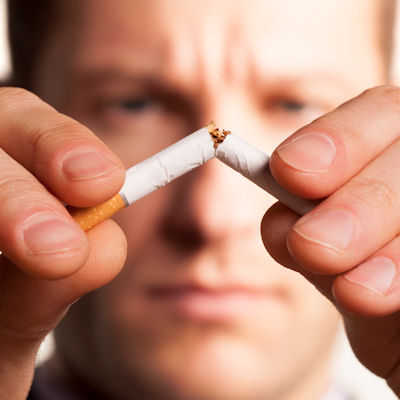 Parents can take practical steps to keep their children tobacco-free. At first, young people begin smoking, chewing or dipping to look cool without understanding the addictive nature of tobacco. However, a person who starts using tobacco when young is likely to continue the habit into adulthood, and quitting later in life is a hard task.
Parents can take practical steps to keep their children tobacco-free. At first, young people begin smoking, chewing or dipping to look cool without understanding the addictive nature of tobacco. However, a person who starts using tobacco when young is likely to continue the habit into adulthood, and quitting later in life is a hard task.
What You Can Do
Here are specific steps you can take to keep your children from using tobacco:
1. If you smoke or use tobacco, quit. Children look to their parents as an example. This means that children of smokers are more likely to smoke than children of nonsmokers. If you don’t smoke, great. If you do, quit now. Tanner offers free Fresh Start classes that can help.
2. Start talking about the dangers of tobacco when your children are ages 5 or 6. If you wait until they're 11 or 12 when they're likely to be tempted to try cigarettes or other tobacco products, it may be too late because their health attitudes are already pretty well set.
3. Explain to your children how tobacco advertising manipulates people into believing smoking (or dipping/chewing tobacco) is cool, socially acceptable and will improve their image. When looking at a billboard, ask your children, "Do you really believe the girl is going to want to kiss the guy after he takes that cigarette out of his mouth?" There’s a funny video about that on Tanner’s Don’t Be a Bonehead Web site: www.DontBeaBonehead.org.
4. Remind them of the cost of smoking. Show your child how money spent on smoking could be used to buy music, movies, makeup, new clothes, video games or many other things that matter to them. Send them to http://smokefree.gov/savings-future to learn how much smoking actually costs.
5. Pay attention to your child’s friends. The chances they'll use tobacco are greater if they have close friends who use tobacco. If your child's friends use tobacco, don't wait until your child starts using it to say something. Bring up the subject first and help them deal with peer pressure.
6. Get to know the parents of your child's friends. Are they smokers? Do they condone smoking? Are they concerned with raising nonsmoking children? Work with other parents to keep informed about your child's activities. And get the kids involved in activities that are not connected to smoking, such as organized sports, hiking, biking or other athletic or group activities.
7. Know what you're talking about by becoming well-informed about the dangers of tobacco. When talking to your child about tobacco, it's important to communicate facts. There's no need to exaggerate, to say smoking is worse than it is. The truth is bad enough. See the Resources section at the end of this article.
8. Arm your child with feelings of self-confidence and self-worth. What does self-confidence have to do with not using tobacco? Everything. Children who feel belittled at home or who are overly controlled will seek to escape one way or another. They might take up tobacco to rebel against authority figures.
9. Tell teens about the negative effects of tobacco that should matter most to them at their age, such as bad breath, yellow teeth and reduced athletic abilities. Teens often don't respond to warnings about the long-term health consequences. Check out the video on Tanner’s Don’t Be a Bonehead Web site: www.DontBeaBonehead.org.
10. Don’t stop at tobacco; spread the word about e-cigarettes (vaping) or using a water pipe (hookah). These are not less harmful or addictive than traditional cigarettes. Make sure your child or teen understands that they all carry health risks. Learn more here.
Youth and Teen Tobacco Use in Georgia
According to the Georgia Department of Health:
- About 11 percent of middle school students (38,000 children) in Georgia currently use some form of tobacco.
- About 23 percent of high school students (93,000 children) in Georgia currently use some form of tobacco.
- About 49 percent of high school students (33,000 children) who currently smoke cigarettes tried to quit during the past year.
- About 45 percent of middle school students (162,000 children) and 55 percent of high school students (248,000 children) reported that they were exposed to secondhand smoke in the past seven days.
Online Resources
If you look online, you’ll find a lot of great resources to help your teen understand the dangers of tobacco. Here are several that Tanner recommends to share with your child or teen:
Take an active stand against tobacco usage, but avoid making threats or ultimatums that rarely work. Instead, educate yourself and discuss the topic intelligently and calmly with your child. Reducing tobacco use in our community will require the support of schools, teachers, parents, coaches, churches, civic groups, healthcare organizations and more. By educating our youth and teens, we can make future tobacco use the exception and not the norm.